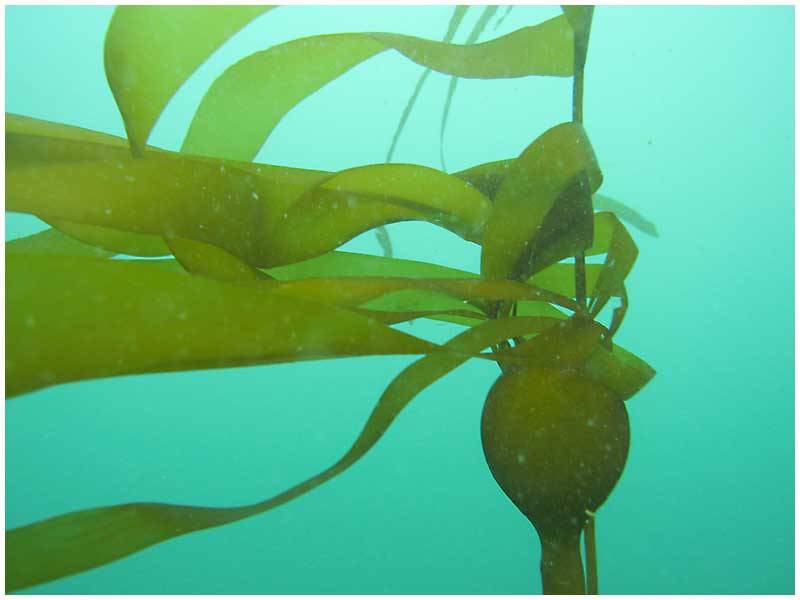While the conservation spotlight is focused on the survival of the Southern resident orcas, another keystone species of the Salish Sea is slowly dwindling relatively unnoticed: bull kelp.
“People are pretty aware of the importance of eelgrass beds. There doesn’t seem to be that awareness of keystone habitat around kelp,” Director of the Samish Department of Natural Resources Todd Woodard said. “I think there’s also a concurrent awareness campaign to let folks know this is just as important of a habitat for a myriad of species.”
Bull kelp is possibly the most iconic and is indeed the largest of the 23 species of large brown algae found in the Salish Sea, according to the Northwest Straits Commission. Bull kelp grow at a rate of up to 2 feet daily and can reach a height of 60 feet or more. Kelp forests provide shelter and protection from high currents to a variety of forage fish and other species as well as helping to bring oxygen into the ocean.
Woodard added that both resident and transient orcas will use the kelp beds to forage for food and for social activities.
“It seems to be something that’s important to the social organization or play,” Woodard said.
Orcas participate in a sort of play activity observers refer to as kelping, wherein the orca will appear to play with kelp or seaweed by dragging it around in the notch of their fluke or by another body part.
Samish DNR has joined with the National Oceanic and Atmospheric Administration Fisheries Northwest Straits Initiative and more than 30 other regional agencies as part of a large-scale effort to study the kelp canopy throughout the Salish Sea and to produce a recovery action plan. The Northwest Straits Commission launched the Salish Sea International Kelp Alliance in January 2015 to combine efforts in Canada and the United States to monitor changes in Salish Sea kelp forest populations and bring awareness to the cultural and ecological importance of kelp.
Samish DNR became the lead researcher for the central Salish Sea due to its presence, access to funding and desire to do so, Woodard explained.
Samish DNR used aerial photographs from 2006 provided by the Friends of the San Juans to compare to more recent observations made by the department since 2016. Overall, the bull kelp population in the region being studied by Samish DNR has dropped 30 percent in the last decade. In some places, like off the southeast coast of San Juan Island, there is less of a decline while in other places, like near Patos Island, the reduction is nearly 90 percent, Woodard said.
Kelp has an important place in Samish tradition, according to Woodard. The Samish Nation has historically used the kelp for a variety of reasons, including using leaves to wrap their food, using bulbs to hold oils for lamps and using dried bulbs as rattles. Additionally, the Samish have a story about the Maiden of Deception Pass — Ko-Kwai-Alwoot.
Using Samish fisherman knowledge as anecdotal evidence, Samish DNR has spoken with the tribe elders to learn the extent of kelp decline they’ve witnessed over the years.
According to Woodard, tribal fishermen have visited kelp beds for millennia seeking fish. He said that a Samish DNR employee spoke with their father and uncle, who between them have more than 100 years of fishing experience. The men helped draw a chart of where they remember kelp beds where they would both fish and avoid propeller use.
Woodard added that indigenous knowledge fills in gaps in scientific trends and provides a more complete picture.
“They remember a lot of kelp in [certain locations] and there’s none today,” Woodard said. “[It tells DNR] this is an area we need to focus in on and figure out the why.”
Though the exact cause for bull kelp decline is still unknown, Woodard said, the species doesn’t do well in temperatures above 16-18 centigrade.
“There’s temperature concern,” Woodard explained. “It’s a cold-water species.”
Other causes could include stormwater runoff, sediment build-up and pollution, Woodard added.
“That’s the next phase of our research,” Woodard said. “There’s a lot of different theories.”
Until a better understanding of why the kelp is in decline, Woodard explained that boaters can help protect existing beds by avoiding known areas so as to not damage them with propellers or by dropping anchor.
“Our main goal is to protect, preserve and enhance this culturally important species,” Woodard said.




